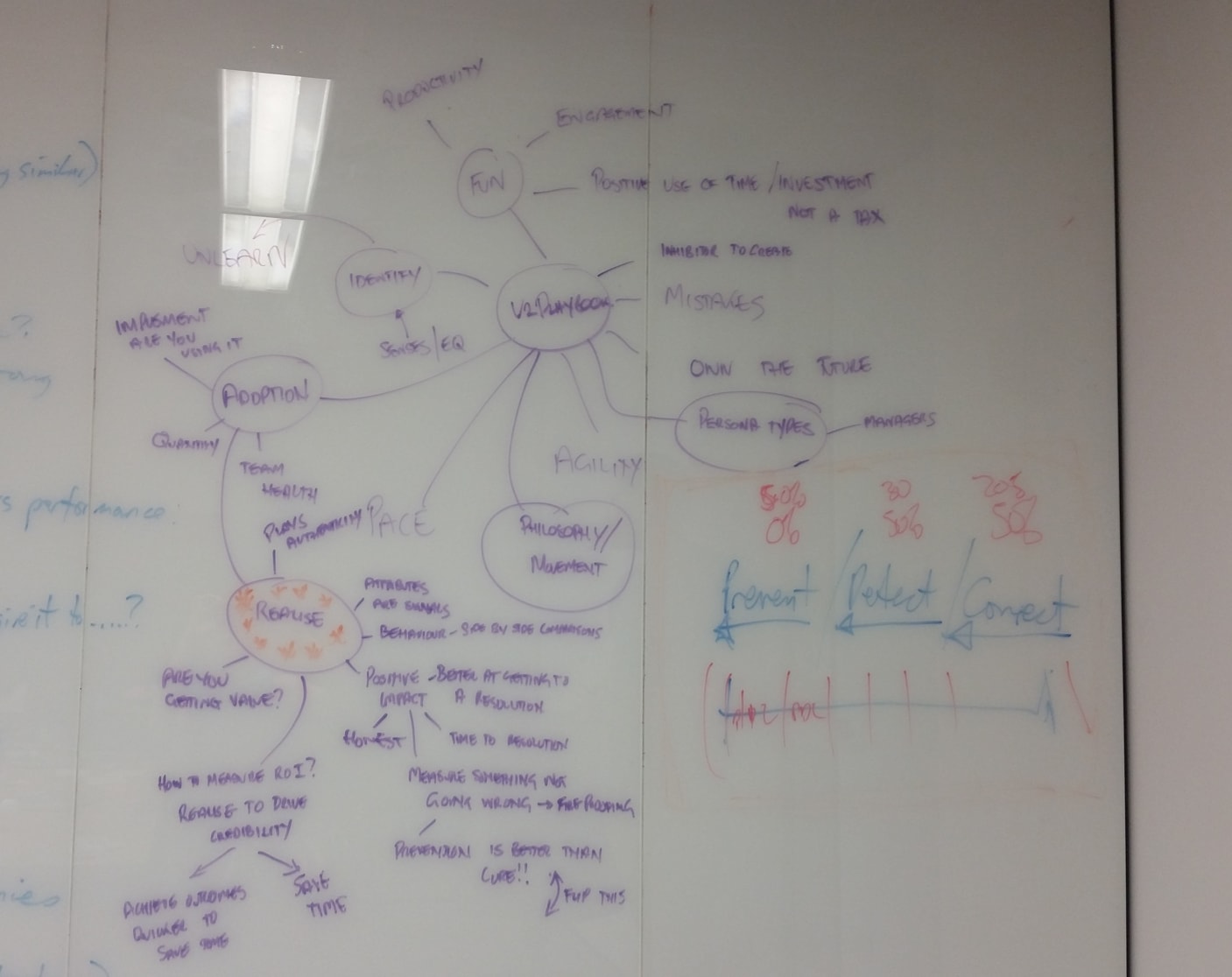Mindmapping
Explore different facets of a problem, and organize your ideas for possible solutions.
USE THIS PLAY TO...
Get off to a great start and keep the momentum high.
Increase your chances of delivering a once-in-a-career, game-changing project.
If you're struggling with proof of concept , shared understanding or customer centricity on your Health Monitor, running this play might help.

People
1 - 6

Time
30 min

Difficulty
Easy
Running the play
You can do mindmaping on your own, in pairs, or as a group.
Materials
Whiteboard
Markers
Prep
Start with a question that is central to your topic or problem.
Make sure the question is somewhat specific – e.g., "How can we make creating Jira issues simpler?" is better than "How can we improve Jira issues?" Careful not to choose a question that boxes your brain into a corner – e.g., "How can we introduce 1-click create for JIRA issues?"
Step 1
Turn your brain on (5 min)
Write your question in the middle of the whiteboard.
Now write down any thoughts that spring to mind in relation to this question (even if the thought isn't an answer, per se). Each thought should be a separate bubble hovering around the question in the middle.
Resist the urge to self-edit or over-think it at this stage. Just let it flow.

Pro tip
If you're working alone, good ol' paper and pencil work just as well as a whiteboard.
Step 2
Branch out (10 min)
Once you've got an initial set of ideas, use each one to create a branch of more ideas. Make sure to connect them using circles, lines, arrows, etc. so it's easy to see how they map to each other.

For example...
Here's a mind map your friendly neighborhood Team Playbook team did recently.
Step 3
Grab the gold coins (5 min)
Go back over your mind map and highlight the ideas that resonate strongest with you. Is there anything missing? Or are there ideas worth exploring further?
With any luck, you'll have hit upon one or two ideas that get you un-stuck and solve your problem. If so, great. Move onto planning your next steps. If not, snap a photo of your mind map and share it with your team as a way of bringing them into the conversation.
Nailed it?
Be sure to run a full Health Monitor session or checkpoint with your team to see if you're improving.
Variations
You can use the same bubbles-and-lines technique to record a group discussion or to capture the peer feedback from a Sparring session.
Related Plays
Want even more Playbook?
Drop your email below to be notified when we add new Health Monitors and plays.
Got feedback?
Drop a question or comment on the Atlassian Community site.
